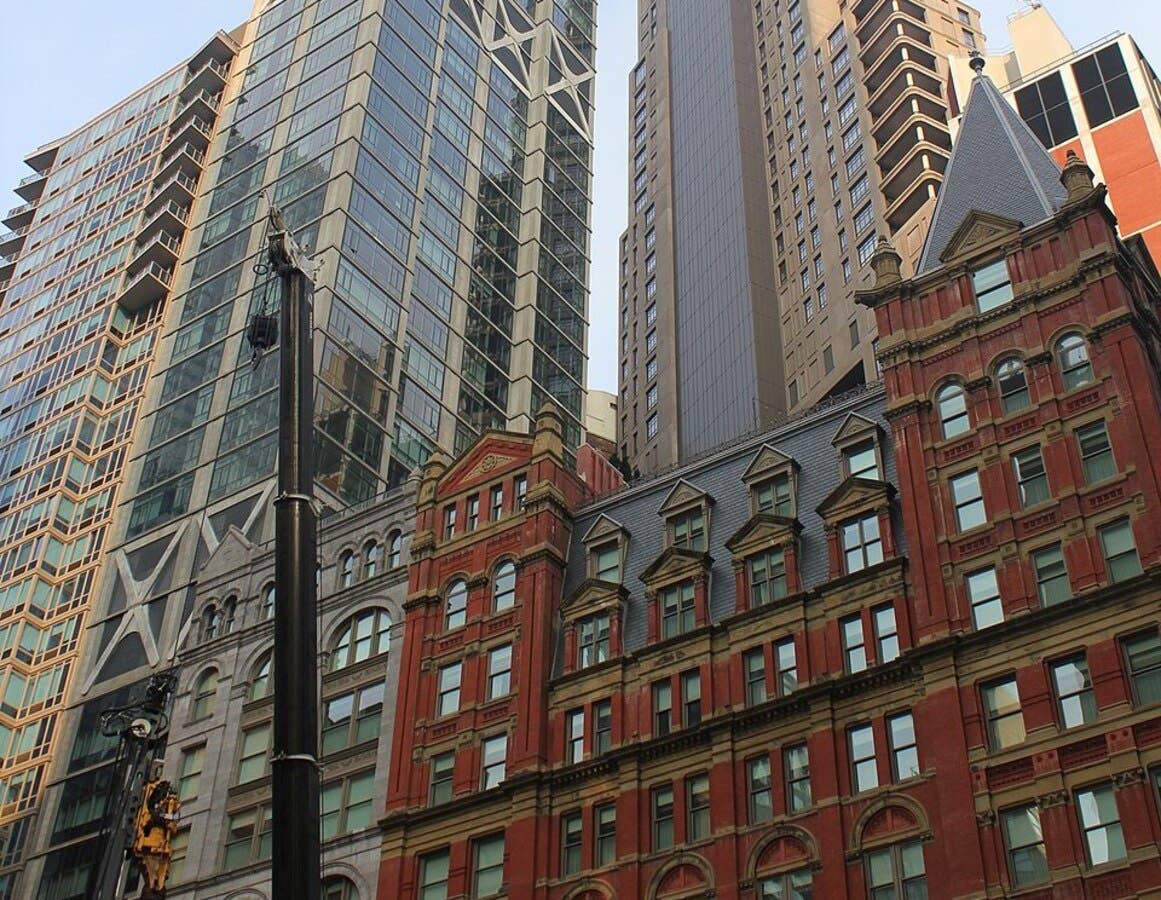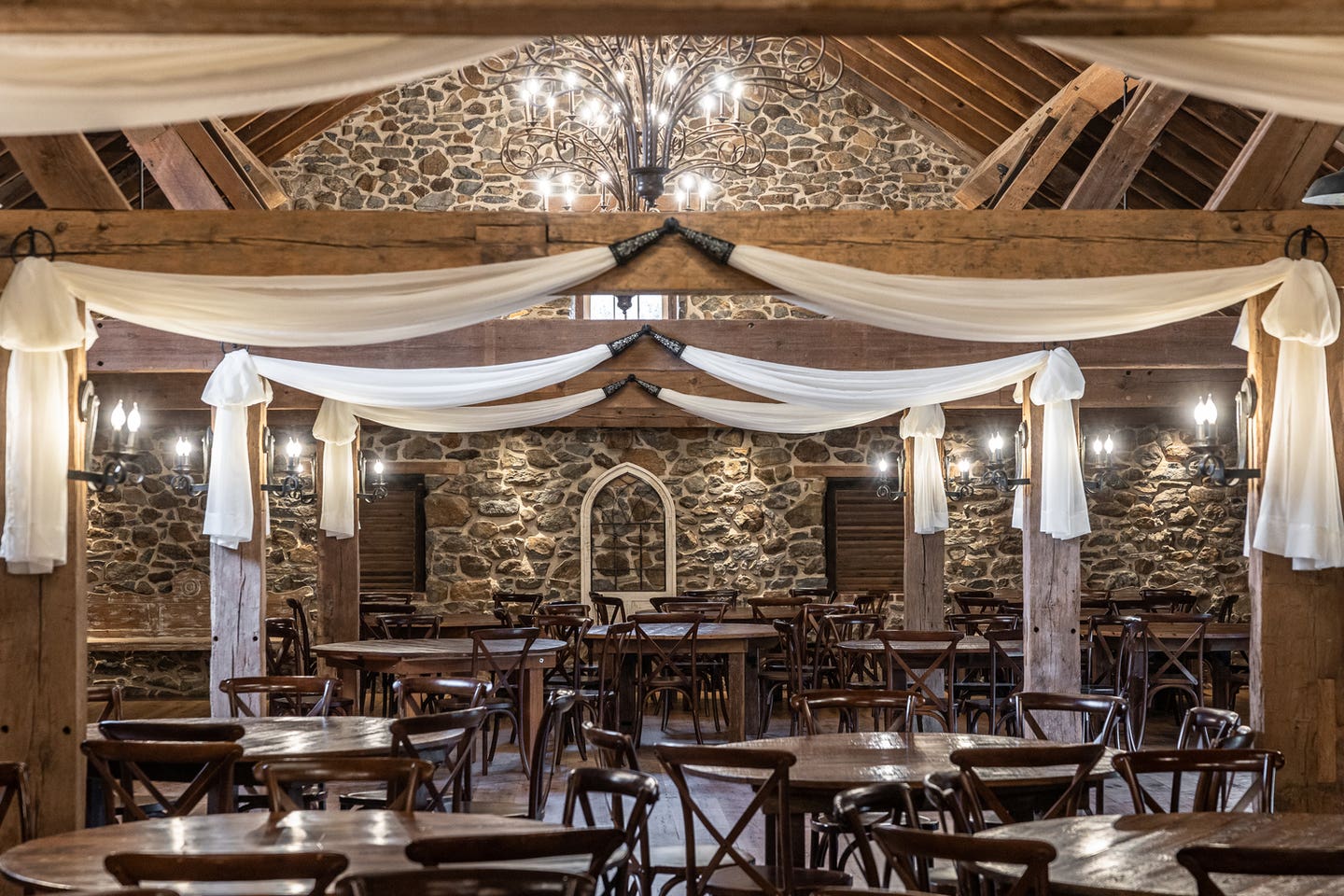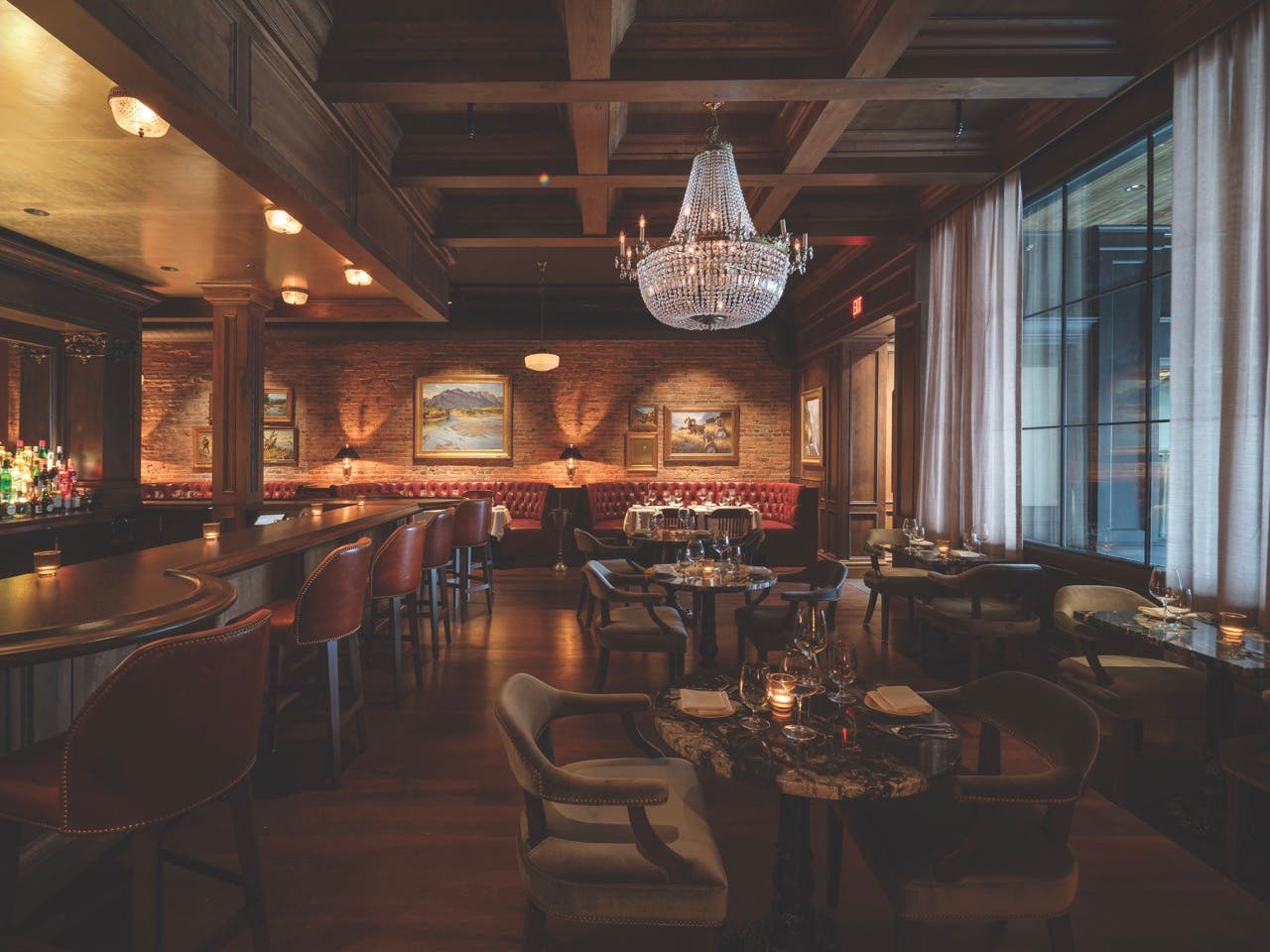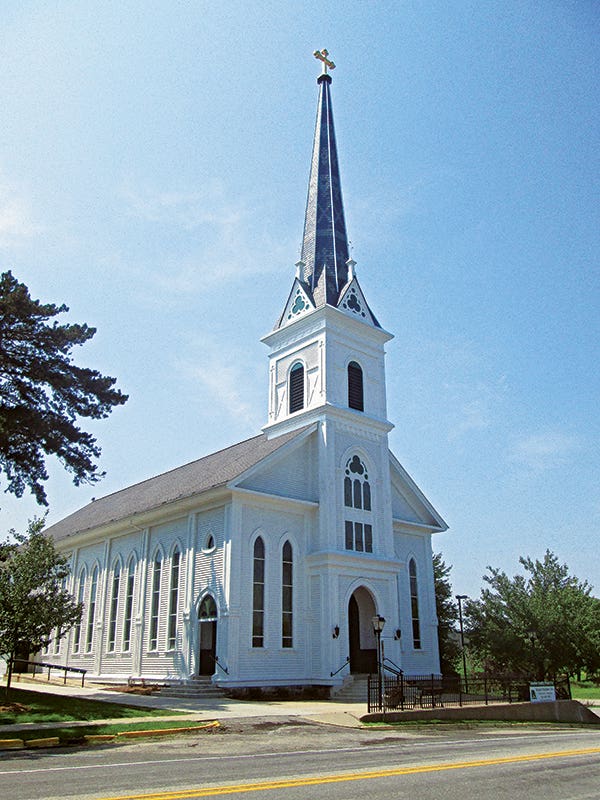
Religious Buildings
Steeple Restoration at Two Historic Churches
PROJECT
St. Patrick Parish, Parnell, MI
Contractor
Nugent Builders, Inc., Rockford, MI; Don Sobie, foreman St. Rose of Lima Roman Catholic Church, Short Hills, NJ
ARCHITECT
Walter Sedovic Architects, Irvington, NY, and Paterson, NJ; Walter Sedovic, FAIA, LEED, Jill H. Gotthelf, AIA, FAPT, principals
Structural Engineer for ARCHITECT
Silman, New York, NY (formerly Robert Silman Associates)
Contractor
Dajon Associates, Hackensack, NJ; David Strauss, Vice President
Structural Engineer for Contractor
Lysaght & Associates, Raleigh, NC

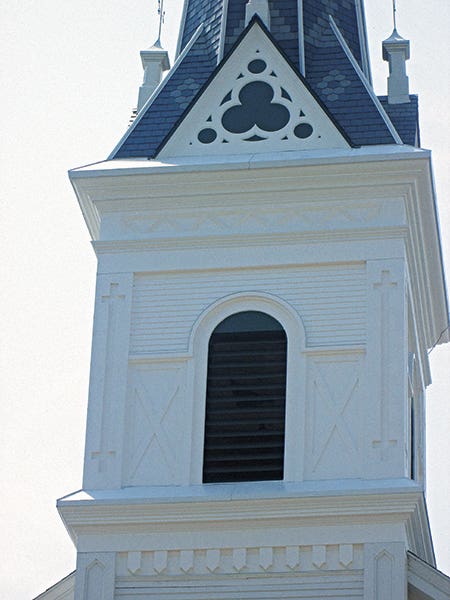

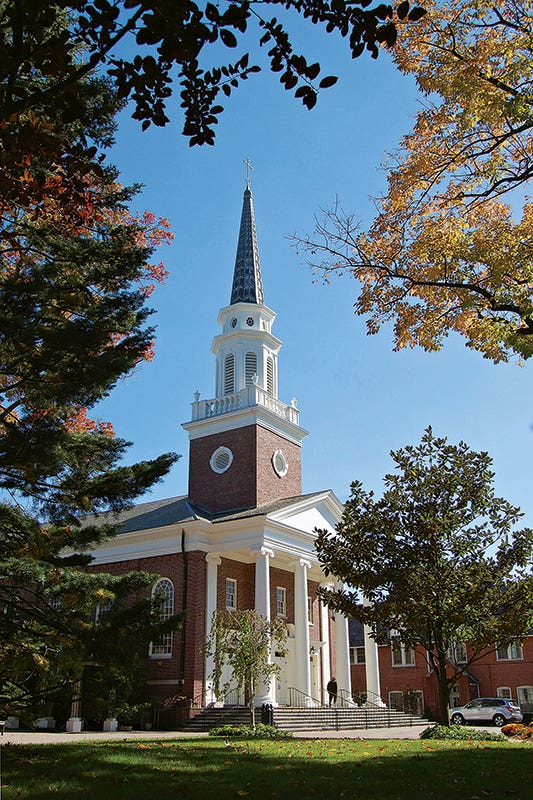

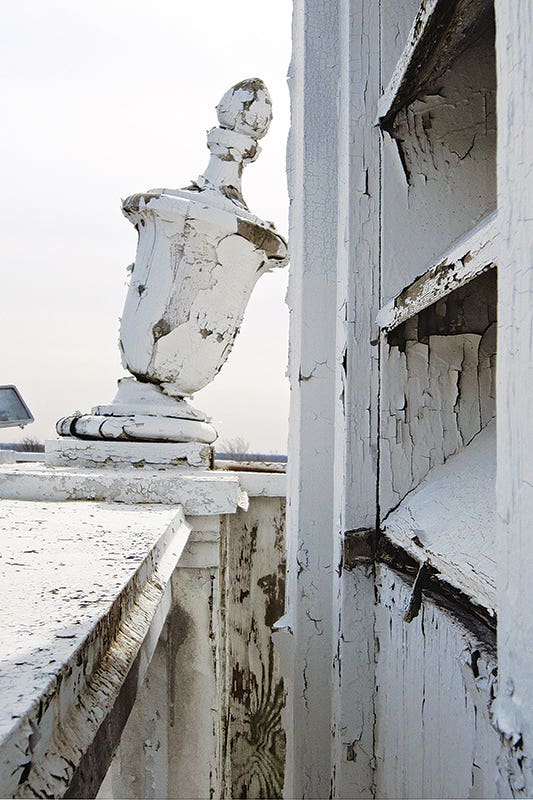
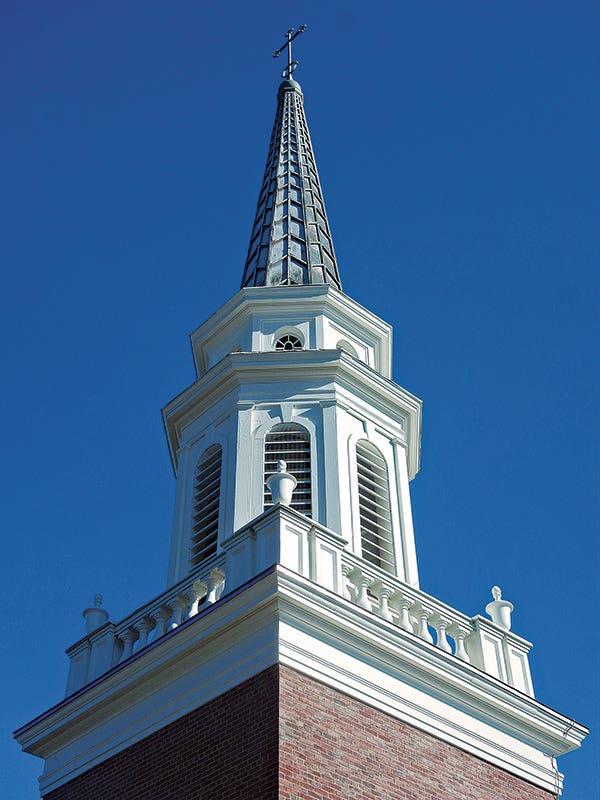
Two steeples – one restored, one rebuilt – are now inspiring their congregations. At St. Patrick Parish in Parnell, MI, the last phase of the restoration was rebuilding the historic steeple using a contemporary material. And, in Short Hills, NJ, Walter Sedovic Architects led the effort to straighten a 163-year-old steeple that had been leaning for 40 years.
In Parnell, MI, 15 miles north of Grand Rapids, the original 1878 church, now restored, is made of old-growth wood. However, when the carpenters went to work on the 168-ft. tall steeple, they found that the wood had rotted and was becoming unstable. Using a 135-ft. boom lift, they removed 1,280 sq.ft. of peeling, rotted 19th-century wood, and brought the pieces back to the shop to be photographed, measured and replicated in a solid white PVC material called Versatex.
“We had replaced some rotted wood around the church, and then realized that there was a lot of rotted wood around the steeple as well,” says Don Sobie, foreman for Nugent Builders, Inc., Rockford, MI, the firm that completed the repairs. The same boom lift was used when installing the new pieces. “We had a lot of wind and rain that year,” he says, “so it took a bit longer than expected to do the installation.”
“Versatex is a cellular PVC,” says Rick Kapres, vice president of sales and marketing for Versatex Building Products. People think of PVC as plastic pipe, vinyl siding or lawn furniture, but this has a foaming agent so it basically acts like wood. You can cut it, rout it and paint it. It can be used to replace any exterior pieces such as soffits, pergolas, window surrounds, louvers or shutters.” The Versatex product was supplied by Standard Supply and Lumber, Grand Rapids, MI.
“We selected this material because it will outlive all of us,” says Father Mark Peacock. “The wood had been there for 100 years. The new material is stain and rot resistant and is very lightweight. It is also easy to work with. The steeple has a very intricate design, with trefoils, and all of that had to be recreated.”
Installation on the $150,000 steeple-repair project was completed in the spring of 2014. “We are thrilled with it,” says Father Peacock.
Old-Growth Wood
Meanwhile, another repair project decided to use salvaged, old-growth wood to repair a leaning steeple at St. Rose of Lima Roman Catholic Church in Short Hills, NJ. The 130-ft. steeple (from the ground, 88 ft. from roof) on the 163-year old church had been leaning for at least 40 years when the congregation decided it was time to investigate and finally resolve the issues causing the deformation.
“We set up a tilt meter to monitor the tower for a year,” says Jill Gotthelf, AIA, FAPT, principal, Walter Sedovic Architects, the firm that led the repair project. “We found that although the tower moved through storms, including Sandy, it continued to move back to its off-center position. It was not in immediate danger of falling, but the deterioration was continuing to get worse.”
The problem was that the steeple was not draining properly, and over the years water was damaging the wood, particularly the timber sill plate and the columns forming the tower and spire. “Water was pitching back to the sill plate instead of draining,” says Gotthelf. “An earlier fix had encased the sill plate in concrete, but it continued to deteriorate.”
“The decision was made to right the tower and to restore its deteriorated timber structure, borrowing from ancient Japanese splicing techniques,” says Walter Sedovic, president and CEO. “We created an inline vertical splice, using timber-framing technology that harkens back a couple of thousand years.”
Old-growth wood salvaged from two locations, the Barnum & Bailey Circus building in Bridgeport, CT, and the Bulova Watch factory in Sag Harbor, NY. “We haven’t cut down a tree in 25 years,” says Sedovic.
He adds that this type of wood deterioration in old wood churches is a common problem in many countries. “At the intersection of the steeple and its base, which is usually the belfry, there is always an allowance for drainage that never seems to work properly over the years,” says Sedovic. “When it stops working, the water backs up into the belfry, leading to deterioration. The knee-jerk reaction is often to replace all of the framing and build a spire out of steel.”
The repair involved replacing the sill plate in its entirety (encased in a later intervention of concrete, it was virtually non-existent), then surgically restoring the deteriorated section of timber columns. “We kept the belfry, but now the water goes where it needs to go, and the sills are protected,” says Gotthelf. “At the same time, we had the opportunity to restore and replace other elements, such as the balustrade, urns and molded detailing.”
Additional Repairs
Also repaired were the oval windows at the top of the steeple. They were rebuilt and new hardware was added, so they are once again operable, allowing convective air currents to temper the tower’s interior conditions. In addition, a new access hatch was added, in a hidden corner, facilitating much easier access to the steeple exterior for ongoing preservation maintenance. The final touch is a three-tiered (belfry, upper steeple, and spire) exterior LED lighting system, which is anticipated to be in place before the holidays. This will allow the church to light the exterior in both white and, if desired, multiple hues to celebrate different occasions throughout the church and community calendar.
The successful execution of this project by Dajon Associates of Hackensack, NJ, was the culmination of years of advance planning, a credit to the ingenuity of the contractor and their concern for the site and defined preservation goals. “We put a jacking system in place and lifted the tower off the building, picking it up about 14 inches,” says David Strauss, vice president. “Once it was elevated, we could get to the deteriorated sections and rebuild them in place. We matched all of the existing profiles and also restored the ocular windows and the louvers.”
He explains that normally a project like this would involve taking the steeple from the building, lowering it to the ground, doing the work and then putting it back. “That is very expensive,” Strauss says, “so we thought of ways to be more competitive. One way was to lift tower up in place.”
Designed by Chuck Lysaght, Dajon’s structural engineer, the jacking system consisted of two (inner and outer) steel structures. A rigid steel assembly was fastened securely to the existing concrete slab of the steeple. The outer legs of the assembly went up, taking the entire bell tower with it, while the fixed section held everything in place. “When all of the work was done, we brought the tower back down and fastened it in place,” says Strauss. “Then we took the steel away.”
“And everyone breathed a sigh of relief,” says Sedovic. “With the source of its longstanding initial problems now corrected, this stunningly restored steeple is poised to welcome the congregation for generations to come,” he says.
Gotthelf adds: “A project with so many complexities requires the strong leadership of the owner and that was provided masterfully by Joan Schultz, Pastoral Associate for the Ministries and Development.”
The project came in at $250,000 construction costs, and work took about three months, with the tower reset in its plumb position in September of this year.



